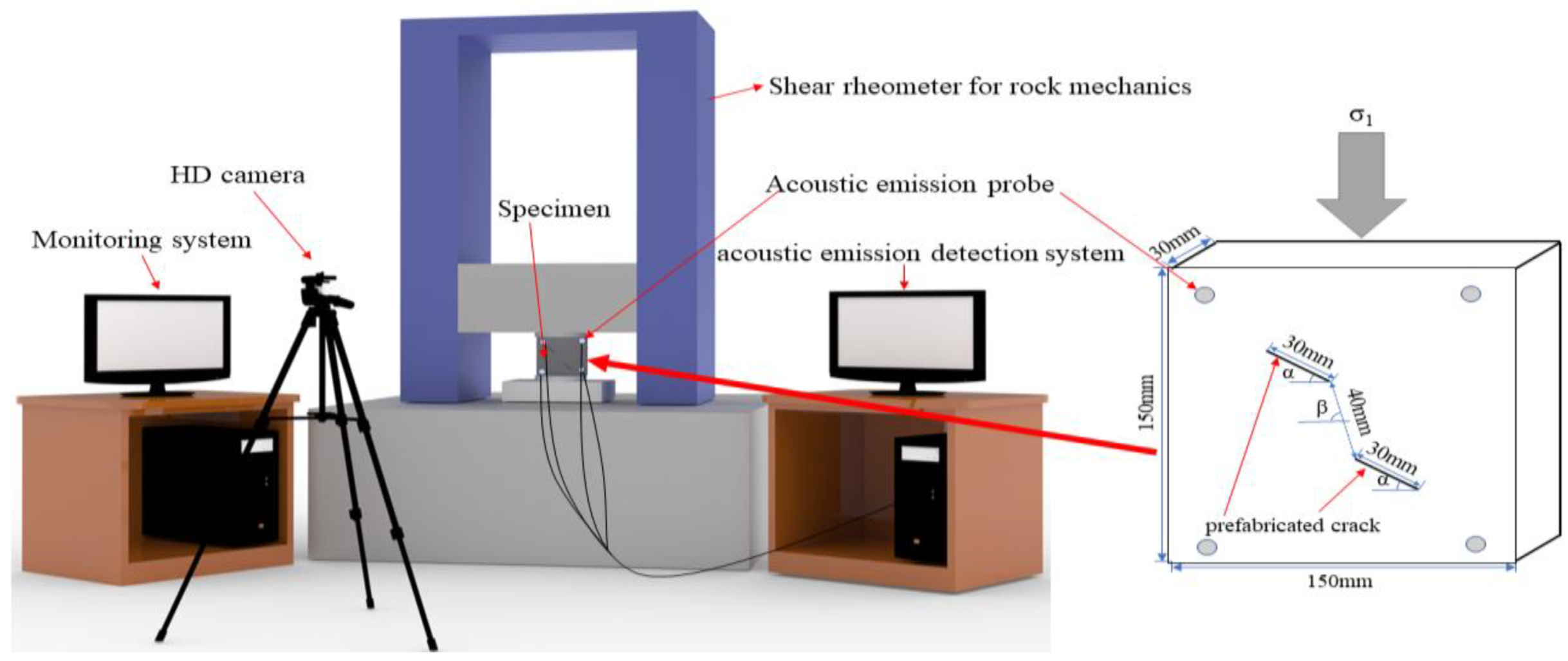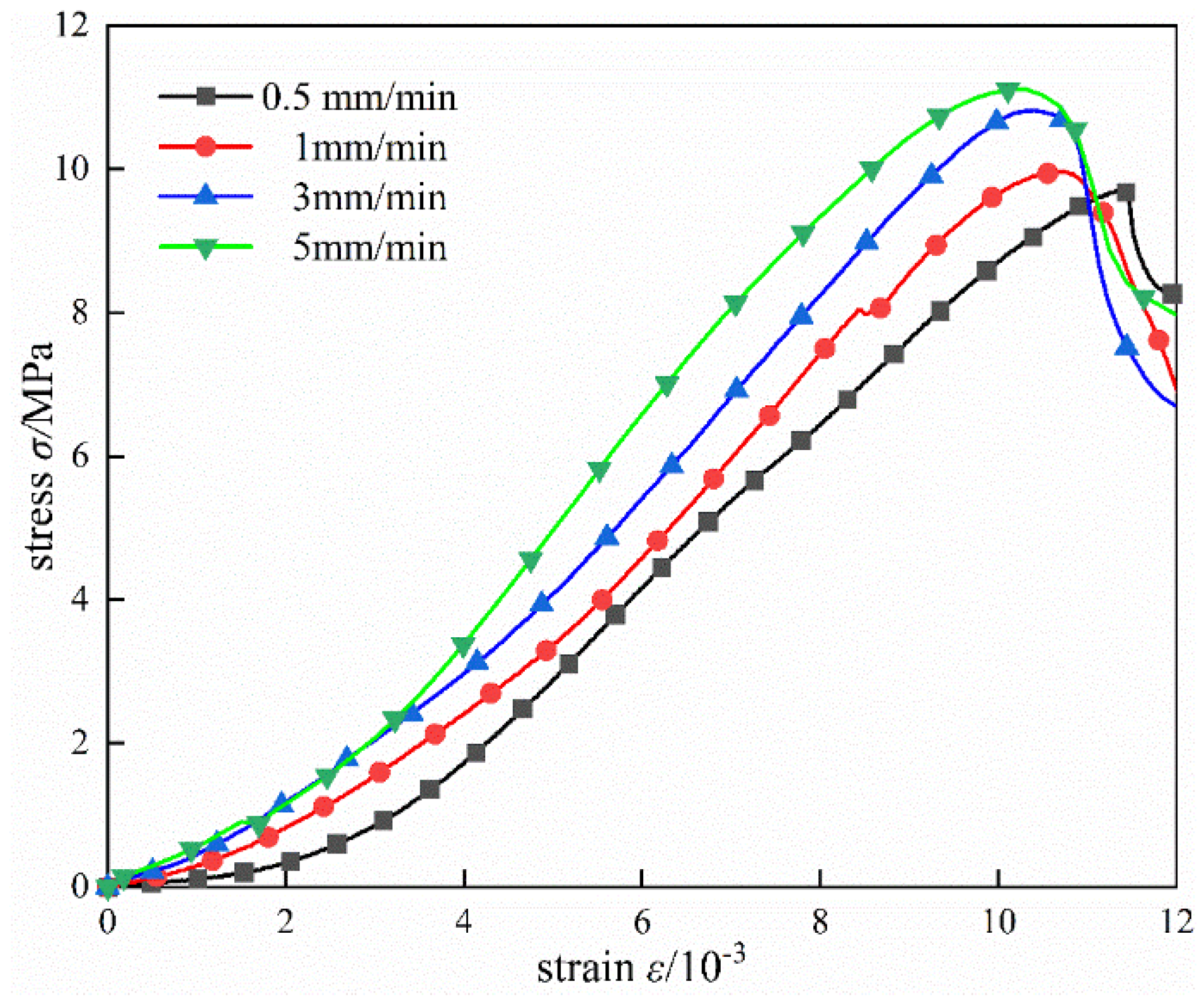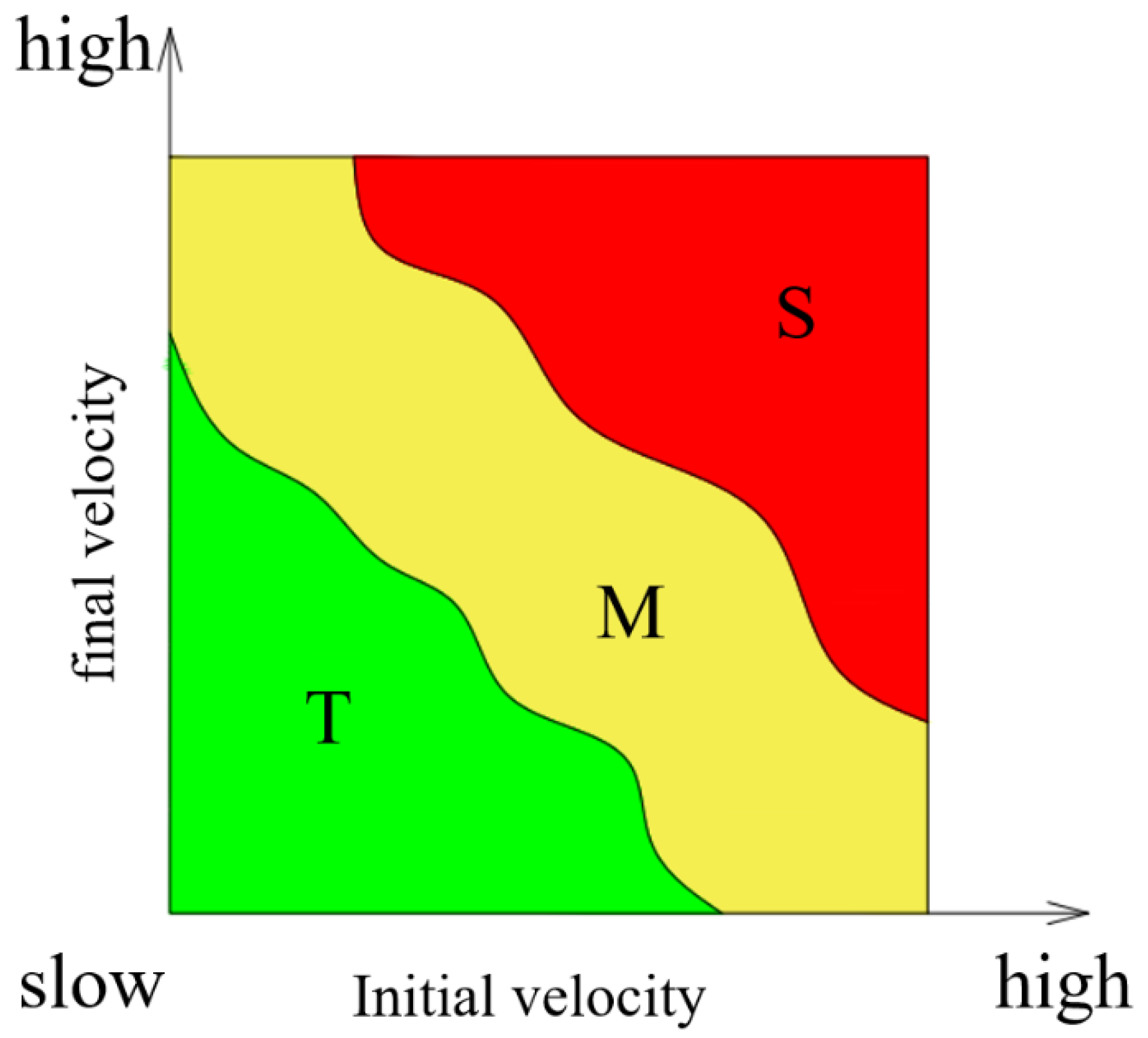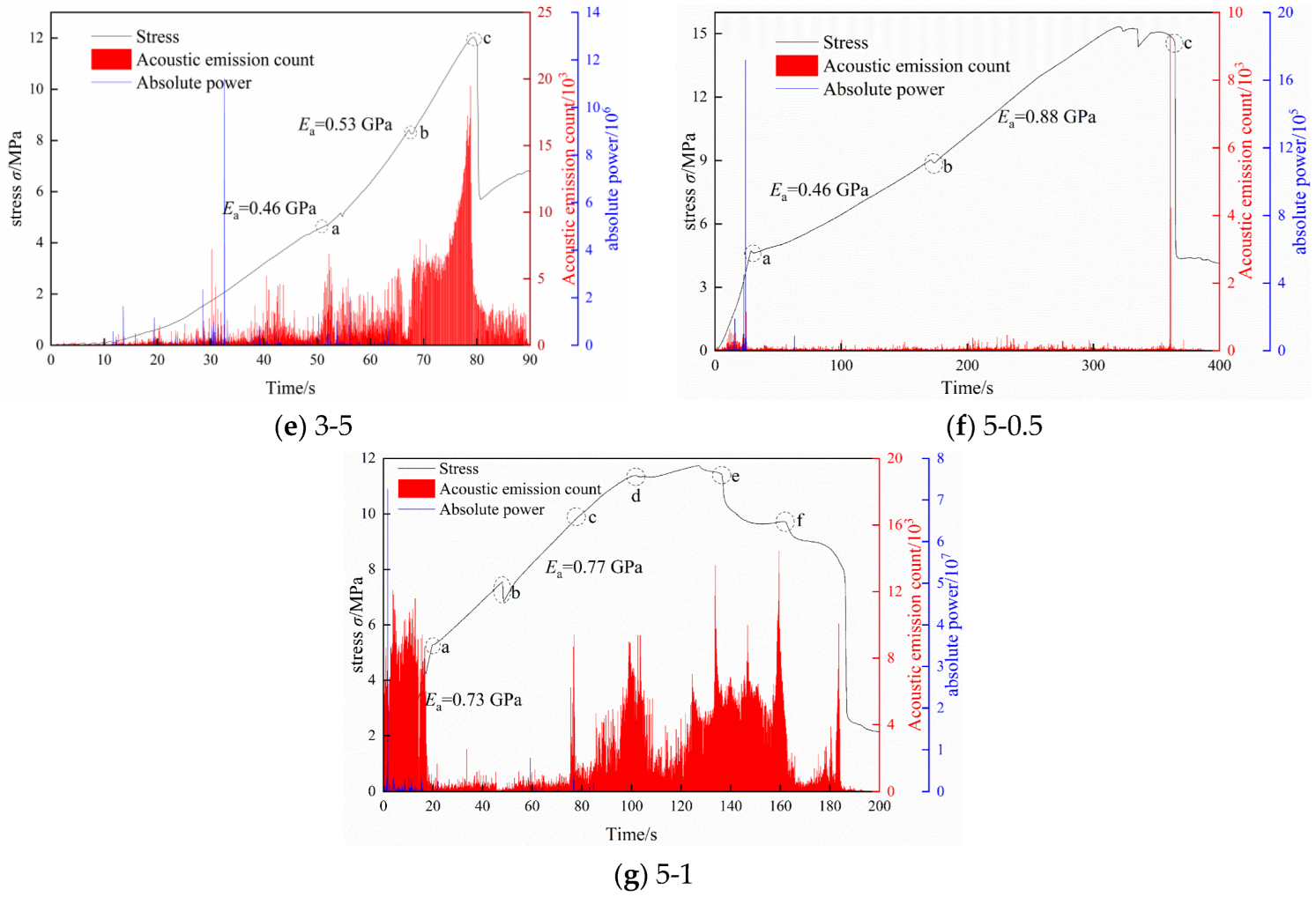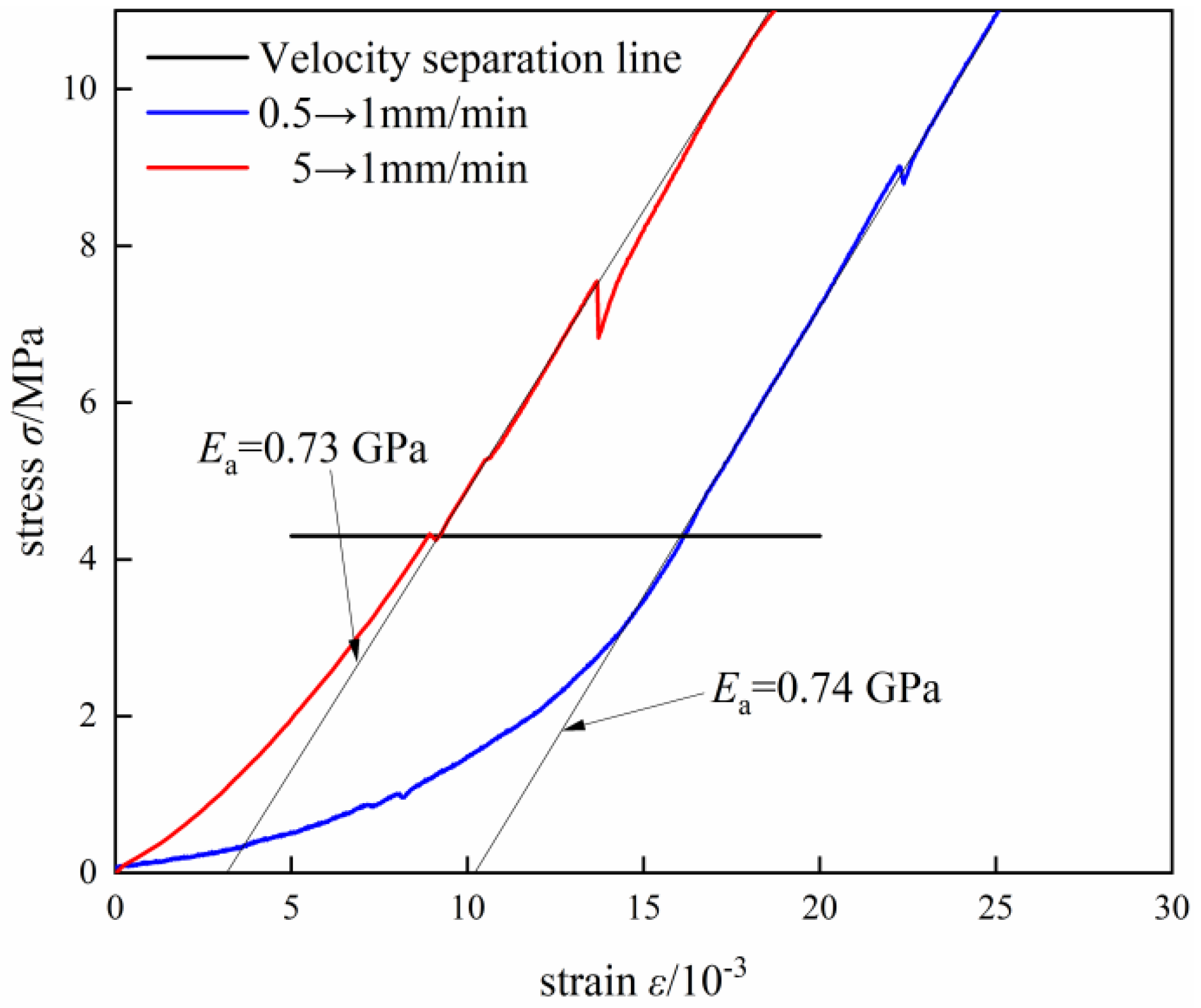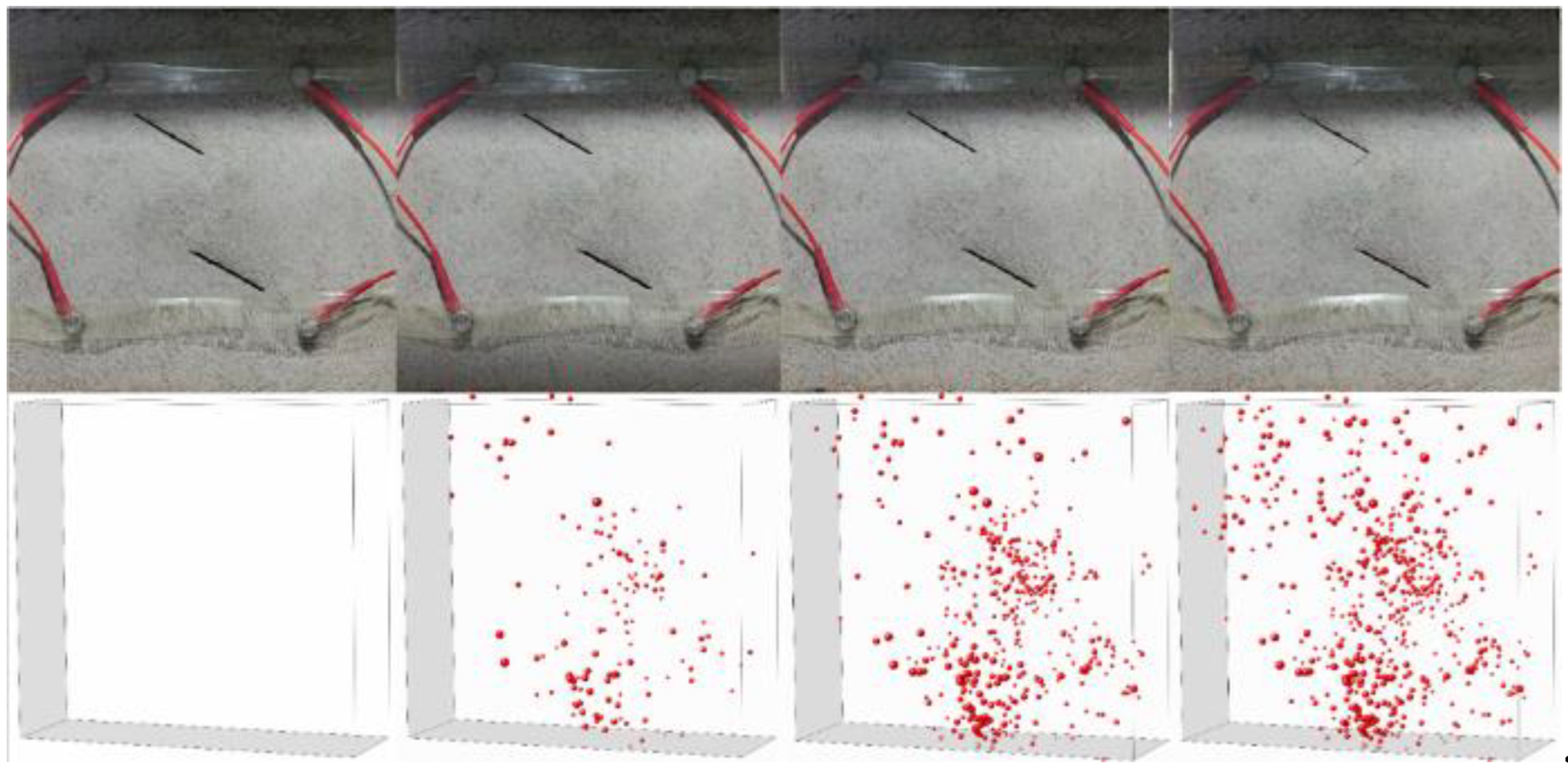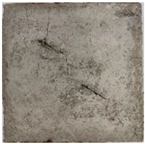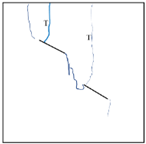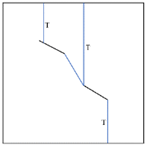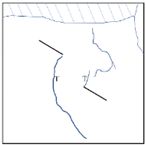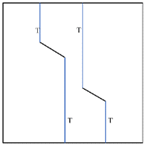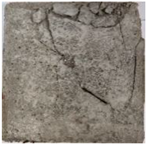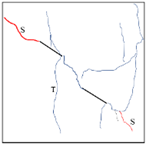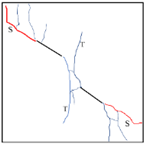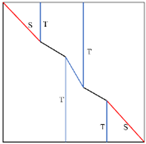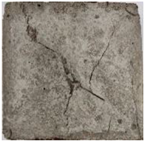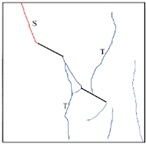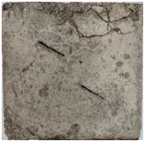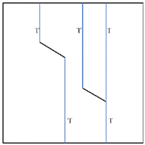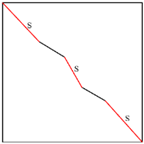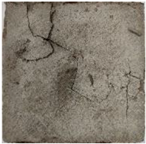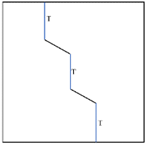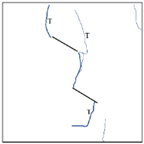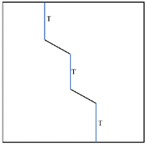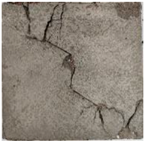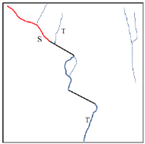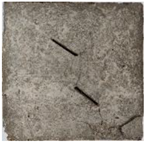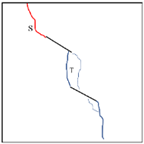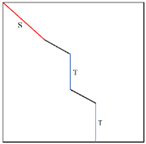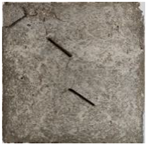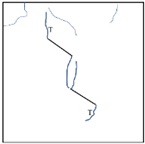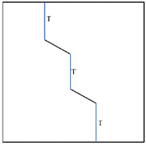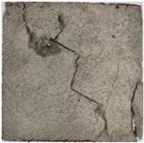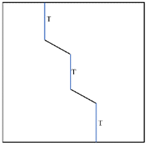3.1. Analysis of the Corresponding Relationship between Crack Propagation and Stress–Strain Curve under Uniform Loading
The crack development and propagation of rock-like specimens are reflected in the stress–strain curves. The development and generation of cracks will cause the fluctuation and change of curves [
13]. Specimens #1 (α = 30°, β = 60°) and specimen #2 (α = 30°, β = 90°) were loaded at different rates, and then the relationship between crack propagation and stress–strain curves was analyzed under uniform loading.
The axial stress–strain relationship under uniaxial compression at different loading rates of specimen (α = 30°, β = 90°) is shown in
Figure 3. The four rates are 0.5 mm/min, 1 min/min, 3 mm/min, and 5 mm/min, respectively.
Table 1 lists the peak strength
qc and maximum strain
εc (that is, the strain corresponding to the peak axial stress) of the specimen at the corresponding loading rate.
It can be seen from the table that, with the increase in loading rate, the peak strength and elastic modulus increase and the maximum strain decreases [
4]. The test results indicate that the stress–strain curve changes with the loading rate. The rock specimen goes through the stages of pore fracture compaction, elastic deformation, stable micro elastic fracture development, unstable fracture development, and post-fracture [
14].
The general behavior of crack evolution of specimens under uniform loading is as follows: the stress–strain curve of specimens varies with the loading rate. When the loading rate increases, the elastic modulus increases, the peak strength also increases, and the peak strain decreases. During loading, as shown in
Figure 4, the remote cracks usually appear first, and then the partial cracks of the rock bridge begin to develop. With the increase of loading rate, the crack propagation at the precast crack tip changes gradually from tensile crack to shear crack. The higher the loading rate, the less the macroscopic cracks of the specimen. At low rate, the internal defects of the specimen have enough time to develop and expand. For example, when loading at low rate, the rock bridge crack is a primary crack, and when loading at high rate, the rock bridge crack is a double crack. This is because microcracks in the rock bridge region fully develop at low rate; then, two precast cracks continuously develop in the stress concentration area and connect through the microcracks, resulting in a primary crack. When loading at high rate, there is not enough microcrack initiation in the rock bridge area, and the cracks of both sides develop relatively independently, leading to double cracks in the rock bridge area.
The ultimate failure modes of specimens under different loading rates include shear failure, tensile failure, and tensile–shear mixed failure.
As can be seen from
Figure 5, tensile failure mode is the main choice of low-rate loading specimens. The change of loading speed will lead to the change of failure mode. For example, the specimens with a loading rate of 3 min/min are tensile–shear mixed failures; when loading rate is 5 mm/min, the ultimate failure mode of the specimens is mainly shear failure.
Figure 6 shows the crack propagation process of specimen #1 under uniaxial compression.
3.2. Analysis of Crack Propagation and Failure Modes of Specimens under Sudden Change Loading Rate Loading
Under sudden change loading rate loading, the stress–strain relationship of the sample changes with loading rate. The specimen accumulates energy continuously at the initial stage of loading, and produces new cracks to release energy after exceeding a certain critical state. The final failure mode of the specimen often depends on the type of crack. There are two main different cracks during the process of uniaxial failure: tensile crack and shear crack. According to the crack types classified by Zhao Yanlin and Cao Ping, et al. [
15,
16,
17,
18,
19,
20,
21,
22], secondary shear crack and wing tensile crack are the main factors leading to the instability failure of specimens under uniaxial compression. The cracks observed in this test were wing crack, tensile resistance crack, remote crack, transverse crack, secondary coplanar crack, and secondary noncoplanar crack, as shown in the
Figure 7. The loading test results are explained in
Table 2 and
Table 3. Different specimen numbers represent different transmission modes. For example, the number 0.5–1 indicates that the specimen changes from 0.5 mm/min to 1 mm/min. Crack tracks were drawn by hand. The main tensile cracks are pictured by blue lines. The shear cracks are drawn by red lines in the sketch. According to the mechanism and track of crack initiation, the failure modes are divided into different ones.
Crack propagation of specimen #1 at different loading rates:
A wide tensile wing crack was developed at the left tip of the two prefabricated cracks in the 0.5-1 specimen at the same time. The expansion direction of the crack was approximately perpendicular to the prefabricated crack, then gradually deviated towards the axial stress direction, and finally expanded towards the specimen end along the axial stress direction. A downward shear crack was generated at the right tip of the upper prefabricated crack, which intersected with the secondary coplanar crack generated at the left tip of the lower prefabricated crack. The rock bridge was connected, resulting in structural failure and instability of the specimen.
The remote crack appeared first in specimen 0.5-3. Tensile wing cracks were generated downward and upward at the right tip and left tip of the upper and lower prefabricated cracks, respectively, until the crack expanded to the end; the specimen was completely destroyed and the rock bridge was not connected.
The remote crack of specimen 0.5-5 first appeared. The right tip of the upper prefabricated crack showed an inclined upward tension crack to the left and a downward tension wing crack, then gradually tilted toward the axial stress direction. With the passage of time, the upper prefabricated crack was compacted. Two prefabricated cracks expanded secondary cracks to make the rock bridge connected until the strength failure of the specimen occurred.
The right tip and left tip of the upper and lower prefabricated cracks of the specimen 1-3 produced downward and upward tensile wing cracks, respectively, to connect the rock bridge, and continued loading. The left tip of the upper prefabricated crack and the right tip of the lower prefabricated crack expanded shear cracks along the parallel direction of the prefabricated crack, respectively, until the crack was connected and the strength of the specimen failed.
For specimens 3-5, the remote crack appeared first. The stress perpendicular to the axial direction was produced in the middle of the lower prefabricated crack extended toward the upper end. The tensile crack perpendicular to the prefabricated crack was generated at the left tip of the lower prefabricated crack. The shear crack occurred at the right tip of the upper prefabricated crack to connect the rock bridge, and the shear crack occurred at the left tip of the upper prefabricated crack.
The remote crack of the 5-0.5 specimen appeared. The upper right corner of the specimen spalled off. Tensile wing cracks came out at the tips of two prefabricated cracks. The crack width increased continuously until the specimen was completely destroyed; the rock bridge was not connected.
A crack perpendicular to the prefabricated crack expanded at the left tip of the upper part of specimen 5-1. Then, it gradually evolved into transverse crack. The shear crack propagated at the right tip of the upper prefabricated crack and the lower prefabricated crack until crack was connected, and the specimen was structurally damaged.
Crack propagation of specimen #2 at different loading rates:
The upper prefabricated crack and the lower prefabricated crack of the 0.5-1 specimen spread upward and downward tensile wing cracks, respectively, thus connecting the rock bridge. With the continuous loading, the two prefabricated cracks both spread out tensile wing cracks, and the specimen was connected instantaneously. The specimen was completely destroyed accompanied by a bursting sound.
The whole process of specimen 0.5-1 was similar to that of specimen 0.5-1. The remote cracks appeared, then two prefabricated cracks expanded the tensile wing cracks independently until the rock bridge was connected and the specimen was damaged by tensile.
The remote crack of specimen 0.5-5 first appeared, and the rock bridge crack developed. Two prefabricated cracks were compacted. Shear cracks and tensile wing cracks propagated on the left tip of the upper prefabricated crack and the right tip of the lower prefabricated crack, accompanied by a cracking sound. The specimens showed structural failure and instability, presenting mixed failure of tensile shear.
The rock bridge crack developed first in specimens 1-3, and the shear crack expanded at the left tip of the upper prefabricated crack and continued to load with surface spalling. At the right tip of the lower prefabricated crack, the tensile wing crack extended and connected instantaneously. The specimen was damaged and unstable.
The remote crack of specimens 3-5 developed first. Shear crack and tensile wing crack propagated simultaneously at the right tip of the upper prefabricated crack to connect the rock bridge. The shear crack extended to the left tip of the upper prefabricated crack, and the tensile crack extended to the right tip of the lower prefabricated crack. With the splitting sound, the crack was connected and the specimen was destroyed.
The whole process of specimen 5-0.5 was similar to that of specimen 0.5-1. The rock bridge crack developed first, and the tensile wing crack expanded from the upper prefabricated crack and the lower prefabricated crack, respectively, resulting in tensile failure of the specimen.
The remote crack of specimen 5-1 was first generated. The rock bridge expanded sawtooth crack. The upper left corner of the upper prefabricated crack expanded the tensile shear crack. A crack parallel to the prefabricated crack generated at the right tip of the lower prefabricated crack, gradually deflecting toward the axial stress direction. As the loading continued, the specimen cracks coalesced and gave off a cracking sound, resulting in structural damage and instability of the specimen.
According to the experimental results, the statistical results of the ultimate failure mode of the rock specimens under the influence of different sudden change loading rates are shown in
Table 4 and
Table 5. ‘iv’ represents the initial velocity and ‘fv’ represents the final velocity. “T” represents the tensile failure of the primary crack. “S” denotes the shear failure of the primary crack. “M” expresses the tensile shear mixed crack of the primary crack. The general pattern is sketched in
Figure 8. The failure mode is closely related to the rate change in the loading process. When the initial loading rate and sudden change loading rate are both low, the failure mode of the specimen is tensile failure. When the initial rate and sudden change loading rate are both high, the failure mode tends to be shear failure. The mode between the two ends is tensile–shear mixed failure. It is worth noting that there is no accurate and obvious dividing line of failure modes in the test, but a transition evolution between different modes.
The general characteristics of the crack evolution of the specimen with sudden change loading rate are as follows: the remote crack usually appears at the upper and lower ends first, followed by the tensile crack. When the specimen is damaged in the form of tensile, it will be accompanied by brittle sound. When shear failure is predominant, the breakage degree of the specimen is serious. During the uniaxial compression test, when the loading rate changes suddenly, the stress–strain curve of the complete specimen is no longer maintained on the stress–strain curve which is corresponding to the constant loading rate, but shows the deformation characteristics of high rigidity and approximate elasticity. The stress–strain curve after loading rate mutation gradually tends to the stress–strain curve corresponding to the constant rate loading at the mutated rate. In the loading process, the failure mode of the specimen is mainly shear failure when the rate is higher. If the rate is lower, the failure mode of the specimen tends to be tensile failure, which indicates that the final failure mode of the specimen mainly depends on the loading rate of the rock during the crack propagation stage. The loading rate has little effect on the final failure form of rock in the compaction stage.
3.3. Correspondence of AE Information under Sudden Change Loading Rate
In the process of crack propagation and failure of rocks, the rapid release of internal energy will generate transient elastic waves which can be collected by acoustic emission monitoring system. An 8-channel acoustic emission detection system (Model PCI-2) was used to record the acoustic emission signals of the specimens. The specimens under sudden change loading rate were analyzed with the help of the time–stress curve, crack propagation video, and three-dimensional acoustic emission positioning diagram.
Due to paper length limitation, the following figure only shows the AE spatio response diagram of specimen #2. Combined with
Figure 9, the whole loading process can be successively divided into several stages according to the AE evolution characteristics: ① compaction stage, ② linear elastic stage, ③ stable crack propagation stage, ④ unstable crack propagation stage, ⑤ post-peak stage. In the loading process, the time–stress AE curves of accelerated loading and decelerated loading are significantly different because of the loading differences. For specific characteristics, see
Figure 9.
Small-span accelerated loading, such as in the 0.5-1 specimen: ① compaction stage, a small amount of acoustic emission signals is generated, amplitude distribution is in 30~45 dB, and absolute energy is less than 2 × 106 aJ. ② Linear elastic stage, AE signals are inactive, amplitudes mainly distribute in the range of 30~50 dB, occasionally 69 dB AE, and the absolute energy is mostly less than 1 × 106 aJ. ③ Stable crack propagation stage, acoustic emission signals are fast and active, and accumulated energy increases rapidly. Amplitude distribution is between 50 and 80 dB, and amplitude is 97 dB in the middle stage. ④ Unstable crack propagation stage, the signal surges, and the accumulated energy increases rapidly, with the amplitude distribution between 70 and 80 dB. The absolute energy is mostly less than 2 × 108 aJ. ⑤ Post-peak stage, when the stress drops, the amplitude of acoustic emission signal decreases immediately within 30–40 dB, and the absolute energy is less than 1 × 106 aJ.
Large-span accelerated loading, such as in 0.5-5 specimen: ① compaction stage, signal values appear, amplitude distribution is between 30 and 50 dB, and absolute energy is mostly less than 1 × 106 aJ. ② Linear elastic stage, a relatively high acoustic emission signal peak appears, and the amplitude is distributed in the range of 50~80 Db. The acoustic emission of 96 dB appears in the sudden change loading rate, and the absolute energy is mostly less than 1 × 107 aJ. ③ Stable crack propagation stage, and the AE signal responds with high value and gradually increases, with the amplitude ranging from 65 to 90 dB. The absolute energy is mostly less than 1 × 108 aJ. ④ Unstable crack propagation stage, the stress reaches the peak, the amplitude is between 80 and 100 dB, and the absolute energy is less than 1 × 108 aJ. ⑤ Post-peak stage, the stress drops precipitously, with the amplitude of 30–50 dB, and the absolute energy is less than 1 × 106 aJ.
Deceleration loading, such as in 5-1 specimen: ① compaction stage, loading rate is high; acoustic emission signal is obvious, amplitude distribution is 60~85 dB, and absolute energy is less than 1 × 108 aJ. ② Linear elastic stage, the AE signal is always at a low level, the amplitude is between 30 and 45 dB, and the absolute energy is mostly less than 1 × 106 aJ. ③ Stable crack propagation stage, the acoustic emission signals are dense, and the response begins to be dense. The amplitude distribution is between 50 and 70 dB, and the absolute energy is mostly less than 1 × 107 aJ. ④ Unstable crack propagation stage, the acoustic emission detection signal surges, with the amplitude between 70 and 90 dB, and the absolute energy mostly less than 1 × 108 aJ. ⑤ Post-peak stage; the AE signal drops, the amplitude distribution is 30~50 dB, and the absolute energy is less than 1 × 105 aJ.
Combined with
Figure 10 and
Table 3, it can be seen that the deformation modulus at the linear elastic stage of the specimen is roughly the same. The final failure mode is the same, even if the rate before the change is different and the rate after the change is the same.
At low loading rate stage, AE count is generally low, while at high loading rate stage, AE count is generally high.
From high rate to low rate, the AE counting image presents a “U” shape or a “W” shape. This is because the AE signal is at a high value in the early high-rate loading. When the crack development stage reaches, the rapid crack development will also lead to the rapid increase of AE signal. When the specimen is about to be destroyed, the AE signal will also respond with a high value until the specimen is destroyed and then the signal decreases and disappears.
Based on the above analysis, the crack propagation mode and failure mode are obviously affected by the loading rate.
